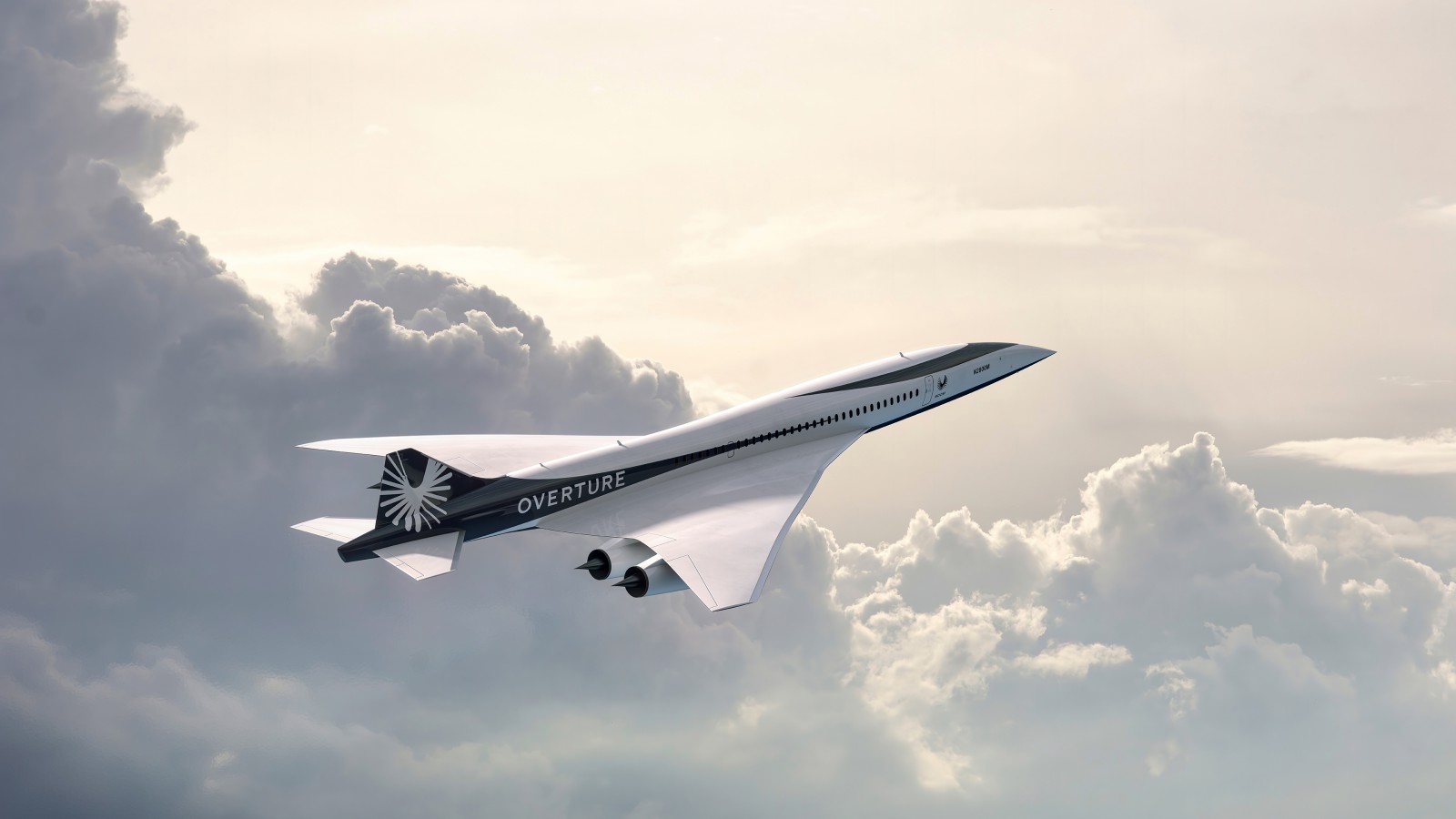Boom Supersonic has unveiled a refined design of its Overture supersonic airliner and also announced a new partnering agreement with Northrop Grumman to develop special mission variants of the aircraft.
Carrying 65–80 passengers at twice the speed of today’s airliners and running on 100 per cent sustainable aviation fuel (SAF), Overture will fly Mach 1.7 over water with a range of 4,250 nautical miles.
Boom said that the new design is the culmination of 26 million core hours of simulated software designs, five wind tunnel tests, and the careful evaluation of 51 full design iterations resulting in an economically and environmentally sustainable supersonic airliner.
“Aviation has not seen a giant leap in decades. Overture is revolutionary in its design, and it will fundamentally change how we think about distance,” said Boom Founder and CEO Blake Scholl. “With more than 600 routes across the globe, Overture will make the world dramatically more accessible for tens of millions of passengers.”
Boom said the update combines a number of engineering innovations in aerodynamics, noise reduction, and overall performance.
Key Features:
Four-engine design: Overture will be powered by four powerful, wing-mounted engines that enable the airliner to cruise at Mach 1.7 over water and just under Mach 1 over land. Additionally, the four-engine design reduces noise while also decreasing costs for airline operators. Engine placement was selected to conform to the strictest passenger safety requirements.
Quieter operation: On take-off, Overture will use the world’s first automated noise reduction system. The airliner will fly without afterburners, meeting the same strict regulatory noise levels as the latest subsonic airplanes. These noise reduction efforts will deliver a quieter experience both for passengers and airport communities.
Contoured fuselage: According to the principle of area-ruling, Overture’s fuselage has a larger diameter toward the front of the aircraft and a smaller diameter toward the rear. Boom has applied this design technique to minimize drag and maximize fuel efficiency at supersonic speeds.
Gull wings: The aircraft’s wings are sculpted to enhance supersonic performance as well as improve subsonic and transonic handling. Importantly, the wing shaping also helps ensure safety and stability at any speed.
Carbon composite construction: Overture will incorporate carbon composite materials into the majority of the build that are lighter, stronger, and more thermally stable than traditional metal construction. Carbon composites can also be manufactured with highly complex curvature, contributing to the aircraft’s aerodynamic efficiency.
Net zero carbon: Overture has been developed from the beginning to be net zero carbon, flying on 100% SAF. Sustainability is woven into all aspects of Overture, from design and production to flight and end-of-life recycling.
Overture Specifications:
• Cruise speed: Mach 1.7 supersonic, Mach 0.94 subsonic
• Range: 4,250nm with full payload
• Passengers: 65–80
• Exterior Dimensions: Length: 201 feet, Wingspan: 106 feet, Height: 36 feet
• Interior Dimensions: 79 feet long, up to 6.5 feet in height at aisle
• Airframe: composite fuselage, wing, vertical, and horizontal
• Wing: gull with digital leading and trailing edge flap control
• Flight controls: 4x redundant digital fly-by-wire on 2 LRUs
• Powerplant: 4x medium-bypass 100% SAF-compatible turbofan
• Airport Community noise: ICAO Chapter 14 / FAA Stage 5
Boom signs partnering agreement with Northrop Grumman:
Boom Supersonic has also announced a landmark partnering agreement with Northrop Grumman to develop special mission variants for the U.S. Government and its allies.
“Time is a strategic advantage in high consequence scenarios, from emergency evacuations to disaster response,” said Scholl. “This collaboration between Boom and Northrop Grumman unlocks the potential for Overture to provide the US and our allies with an unmatched high speed capability when and where it’s most needed.”
























